You can grow a Jujube tree for its light green leaves and sweet, edible fruits. Although mostly propagated using vegetative methods, Jujube trees will grow dependably from seed. Seeds require little monitoring or care after sowing, but they should be thoroughly cleaned and treated before planting to ensure successful germination.
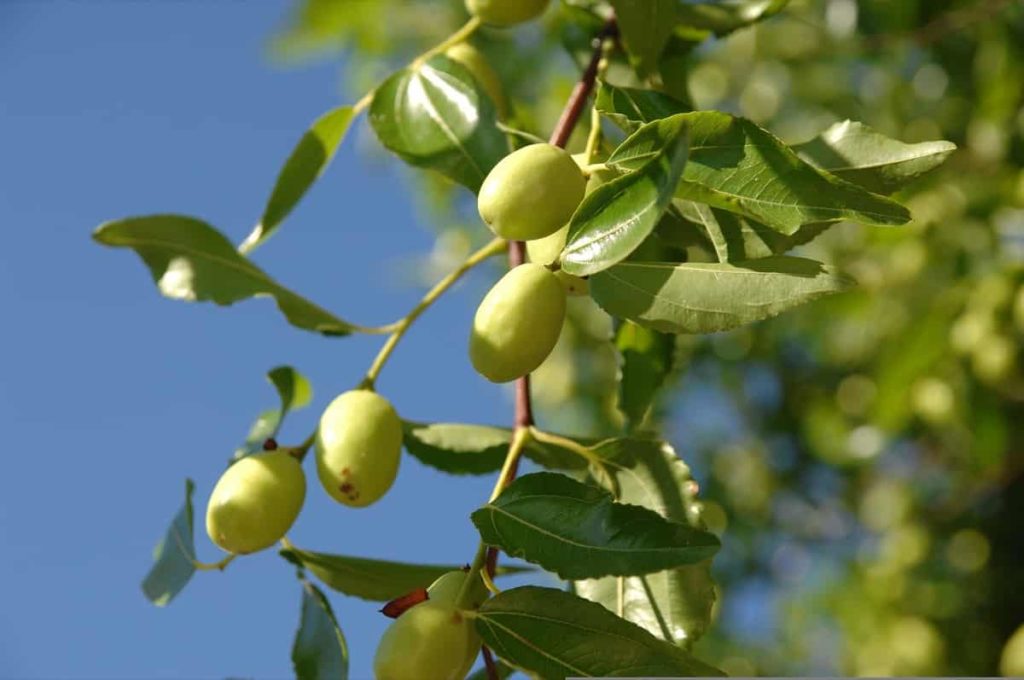
Jujube produces a 30 to 50 feet long tree with wide, leathery leaves on triangular branches. Fruits from Cherry to Plum sizes start from green to ripening to red. Jujube trees can be grown from seeds, but they may not be fruit or come true to the parent.
How to grow Jujube from seed to harvest
How long does it take for Jujube seeds to fruit?
- If you have sandy, well-drained soil, that is not difficult to grow Jujube trees. These trees are not particular about the pH of the soil but need to be planted in full sunlight. The tree can be propagated by seeding or root sprout.
- Jujube trees bear flowers in the same year as planting or grafting, and some cultivars can also bear fruit. Most cultivars will produce fruit in the second year. After 4 to 5 years, Jujubes will be reasonably produced.
- Jujube will start production in 3 or 4 years, and production can be very heavy. You should harvest them when they begin to change color from lime green to rust color. For the best taste, pick the fruit early in the morning.
How long does it take to grow Jujube from seed?
- Remove the Jujube stones from the refrigerator after the cold stratification period. You should place the seeds in a bowl and soak them for 24 hours. Rub the side of each Jujube stone with a steel rasp until a small hole is formed, or gently crack the endocarp with a hand-held nutcracker. This is known as scarifying the seed. This weakens the endocarp or hard outer layer, so the seed inside will germinate faster.
- Sow Jujube seeds in individual 4-inch pots filled with sterile potting mixes. Sow them 1/2 inch deep. Water each pot after sowing to help settle the soil. When growing Jujube in the pot, place the pot-bearing Jujube seeds near the greenhouse, insulated cold frame, or a large sunny window indoors. Warm the pots with a germination mat set to 27°C during the day and 16°C at night. Closely monitor the moisture level in the potting mix, as it will dry faster with warmer temperatures. Add water whenever the top 1/4 inch feels mostly dry.
- Watch the germination in three to four weeks. Keep the germination mat in place for another two weeks, then start turning it off during the day. Warm the pot overnight for another week, then remove the germination mat. When the outdoor temperature is above 13°C at night, transfer the Jujube seedlings outside to a warm shelter. Transplant the seedlings into 2-gallon pots filled with potting soil as they produce several sets of mature leaves.
In case you missed it: Jujube Gardening For Beginners – How To Start
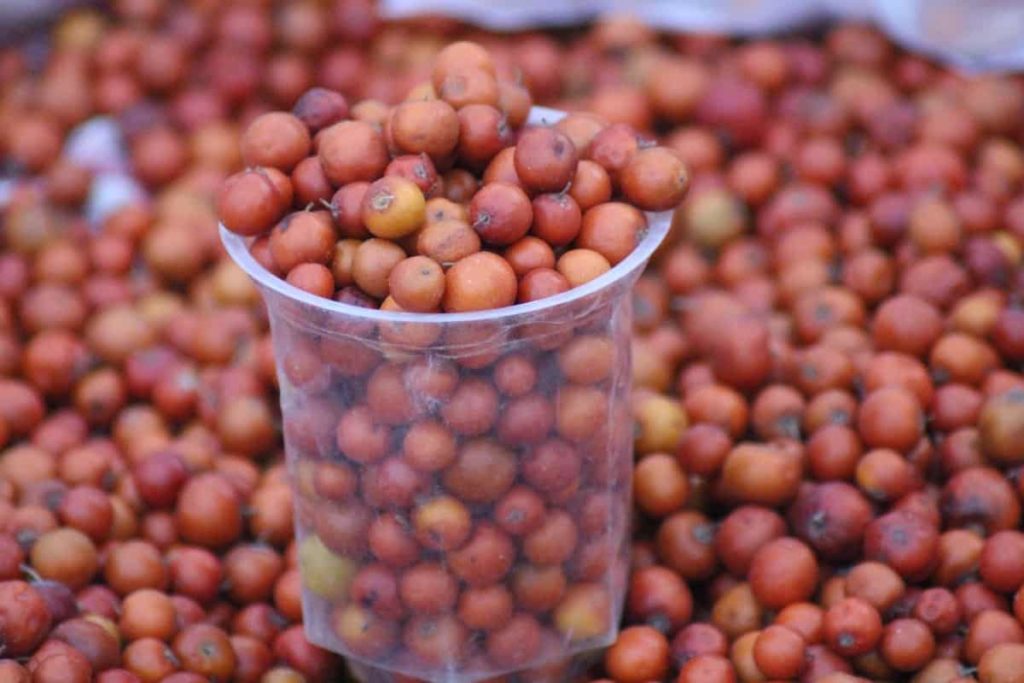
Can I grow Jujube from seeds?
- Growing Jujube from seed is not so difficult. Lang variety produces more spreading trees than other Jujube trees. The fruit is red-skinned at maturity. Both Li and Lang varieties should be grafted because they are not true with seeds.
- Jujube seeds can germinate without stratification, but stratification makes germination easier and more reliable. The stones should be stratified into moist sand at 2°C to 5°C for 3 to 4 months before sowing. The stones are mixed with wet sand in a 1:3 ratio by volume and can be stored in pots or plastic bags.
When should I plant Jujube seeds?
You can plant Jujube seeds in spring. Collect Jujube seeds in late summer or fall after the fruit ripens to a glossy, reddish-brown color and no hints of green are left at the ends. The Jujube season is a short growing season from early September to late October. The unpicked fruits will only dry and shrivel on the branch. Dried Jujube can also be found throughout the year in supermarkets.
Do Jujube trees need full sun?
- Jujubes need full sun to thrive and love hot and dry areas. It thrives in full sunshine and partial shade; it also tolerates poor soil but does better with well-fertilized soil. The Jujube tree is drought tolerant but is perfect for watering regularly in hot weather to produce good fruits.
- Jujube trees grow best in a climate with long, hot, dry summers followed by moderate rainfall early in the season and cool temperatures during its dormancy.
- The Jujube tree enjoys a warm and sunny spot. With the right amount of sunlight and heat, the tree will continue to flourish without asking for much attention. When cutting or planting seeds, ensure they are not in the shade of other trees.
- Jujube trees don’t like to live in the shade, and they won’t bear fruit very well if you don’t give them enough solar rays. Finding a place with full sun for most hours of the day is perfect for your Jujube tree.
How often do you water Jujube trees?
- Deeply water newly planted Jujube trees weekly in the spring and early autumn seasons and 2 to 3 times per week during hot summers. Deciduous plants become dormant (lose their leaves) in winter, so you should stop watering.
- Jujubes should get at least 1 inch of water per week for best growth and fruit production. Water regularly, especially during dry periods. The fruit can fall prematurely if insufficient irrigation is done during dry spells. Jujubes need a little bit of pruning.
- Jujubes are more drought-tolerant than most fruit trees, although they will need some irrigation to produce abundant fruit. The tree is quite resistant to pests.
- Make a 36-inch diameter water basin around the well-watered and young tree to help maintain moisture near the roots while the tree is young and growing.
- Water the tree twice weekly in addition to winter, depending on the weather conditions. It is better to ensure that the soil is not too wet before re-watering. If that’s the case, wait a couple of days and check again. You can water the tree less when it is well established with a deep root system.
Do Jujubes ripen after picking?
- The green fruit will not ripen after picking, although a little riper, pale-yellow fruit if enclosed in a bag and exposed to ethylene gas from the ripening Apple. This fruit will be less sweet than the fruit ripened from trees.
- Jujube fruit matures from February to May (based on the cultivar grown). Immature fruits have green skin and will not ripen if picked up. The fruit that picks later will continue to ripen after the harvest.
- Jujubes are ready for harvesting when they change color from lime green to rust color. For the best taste, pick the fruit early in the morning. Ripe fruits have a mild taste like Apples.
In case you missed it: Growing Mangoes from Seed to Harvest: A Detailed Planting/Production Guide for Beginners
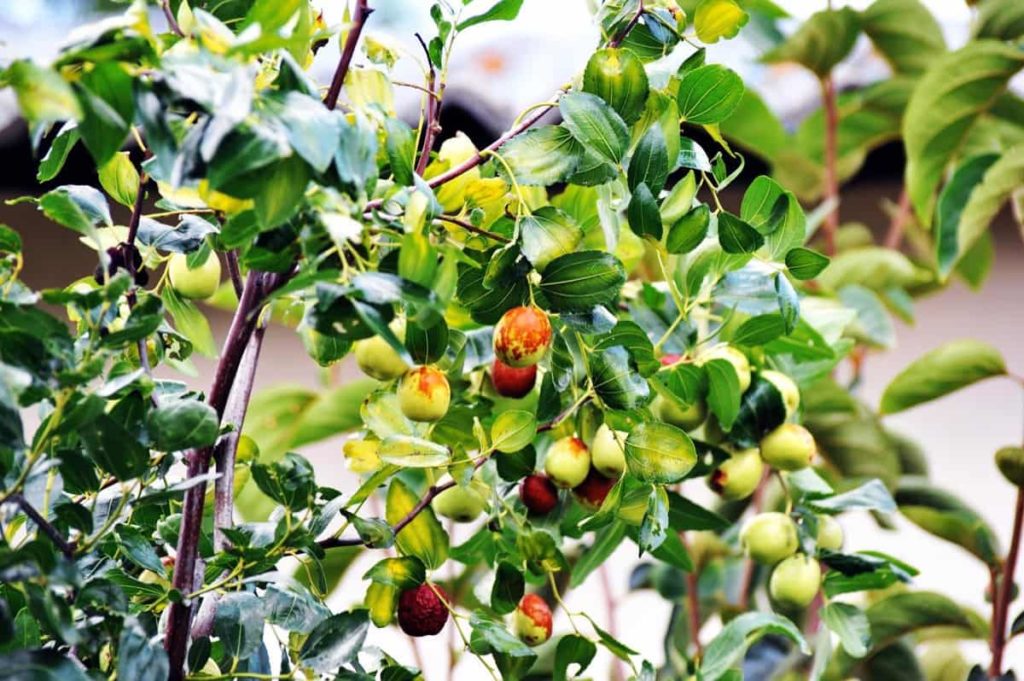
How do you know when a Jujube is ripe?
- Jujubes at least half brown are perfect for fresh food, although fully brown/red Jujubes are still perfectly edible. Pick fruits that have smooth skin.
- Green when they are immature, they turn yellow-green with reddish-brown spots as they ripen, and the fully mature fruit is completely red. You can pick them anytime, from yellow-green to full red; however, the redder they are, the sweeter they will be.
- The unripe Indian Jujube’s skin is tight, light green, and firm. Ripe Indian Jujube is yellow with brown spots. It tastes slightly more fermented than unripe Jujubes and has a mealy texture. The overripe Indian Jujube is orange-brown, sometimes wrinkly, and has an airy texture. Some people prefer overripe Indian Jujubes, while some say they taste old and musty.
Can Jujube grow from cuttings?
- It is not very successful in growing Jujubes from cutting. There are some indications that Jujubes will root from soft or hardwood cutting, but in practice, Jujubes are not propagated by cutting.
- Inspect a Jujube tree early in the morning to find a suitable tip for cutting. Choose a stem that is as thick as a pencil and has small, immature leaves growing closer to the tip and more mature leaves near the bottom, closest to the stem. Immature stems do not break, and mature stems do not bend.
- Select another similar stem to cut. Ideally, it should be a side stem that grows from an important guiding branch. Cut 4 to 6 inches from the tip of the stem with a sharp knife. The cutting should be taken just below the set of leaves.
- Wrap the cutting in a damp paper towel, and place it in a plastic bag. Cut several more stems for propagation because the cutting is not always root as desired. Keep the bag in the shade until you are ready to take your cutting indoors for planting.
How do you harvest Jujube?
When the Jujube fruit becomes dark brown, it will be ready for harvesting. Until it fully dries, you can leave the fruit on the tree. Instead of pulling the fruit from the vines, cut the stem while harvesting. Immature fruits have green skin and will not ripen if picked up. The fruit that picks later will continue to ripen after the harvest. Jujube trees will start production in 3 or 4 years, and the yield can be very heavy.
How do you fertilize a Jujube tree?
- Jujube performs well with little or no fertilization. Light broadcast applications of a balanced fertilizer such as 10-10-10 at two-month intervals during the growing season will probably accelerate growth. Do not fertilize until the newly planted tree has several months to be established.
- Do not fertilize Jujube when planting, but apply 1 cup of 8-8-8 fertilizer every subsequent spring to the soil under the tree canopy. Immediately after planting the tree, water Jujube trees and even trees are established every few days. Mature trees often require water, perhaps once a month during dry conditions.
- Water well twice a week on light soil and once a week on clay soil. Soak the entire root system deeply, this usually takes 40 to 50 minutes. Jujubes should get at least 1 inch of water per week for best growth and fruit production.
In case you missed it: How to Grow Apples for Beginners: A Guide to Planting to Harvesting
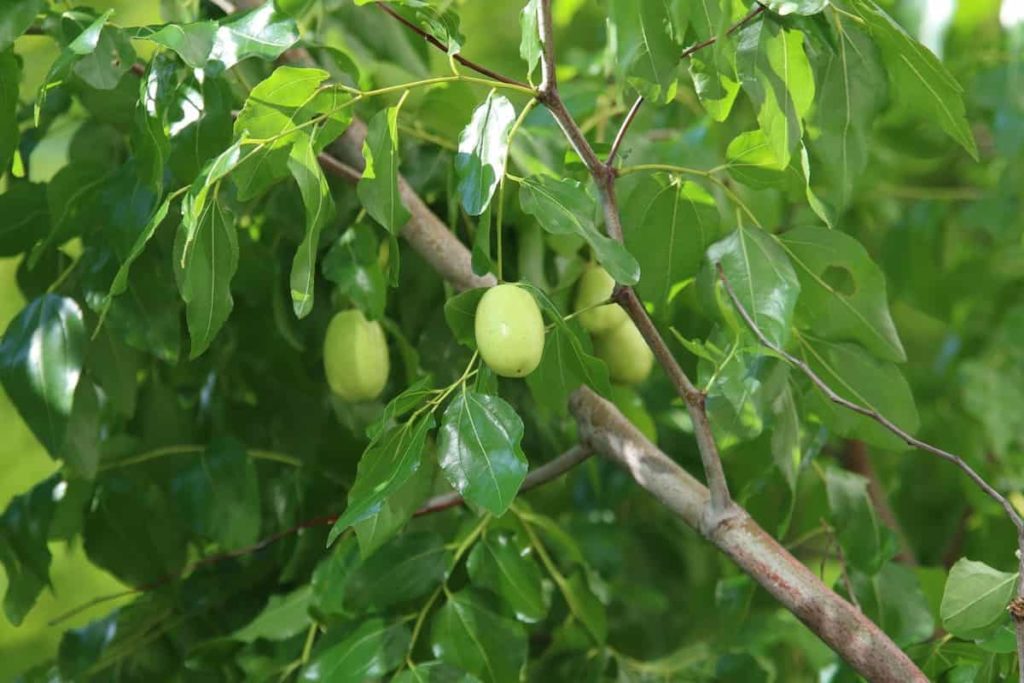
Can Jujube grow in pots?
- You can grow Jujubes in pots. Many apartment dwellers have planted Jujube trees on their balconies. Turn a half barrel upside down and drill a 7 or 8 three-quarter to the 1-inch hole bottom for drainage. Fill the barrel half full with cactus and citrus potting soil. Add a half cup of organic fertilizer and mix it well. Add more potting soil to fill half a barrel within the top four inches, and mix in another half cup of organic fertilizer.
- Dig a hole in the barrel’s center deep enough for your tree’s roots. Remove the tree from its pot and inspect them. You should set the tree in the center of the barrel. Lightly shake the base of the trunk to settle it. Water the container well. Add a couple of inches of compost over the soil as mulch. Make sure the tree graft stays above the soil line. Wait until the soil dries at least a couple of inches below the surface before you water the barrel again.
Do you need two Jujube trees?
- Though the Jujubes are self-pollinating, they will bear more fruit if you plant two trees. Li variety is still considered one of the best, ripening in the late summer. It produces large fruits, ideal for fresh eating.
- Li Jujube is self-fertile but will produce more fruit when planted with Lang. Jujube trees are drought-resistant, thorny, and practically free from pests and diseases. They need a long hot summer. Jujube needs only 150 chill hours.
- The pollination needs of Jujubes are not clearly defined but are done by ants or other insects and possibly by the wind. Most Jujube cultivars produce fruits without cross-pollination. Jujube is protected from the late spring frost by delayed budding until all possibility of cold weather is over.
- Plant two Jujubes of different cultivars together, still 10 to 15 feet apart, or add another tree near a tree that has already grown. Although the Jujubes are self-pollinating, meaning they will produce some fruit without any other tree nearby, they perform better with cross-pollination than other Jujubes.
In case you missed it: How to Grow Oranges from Seed to Harvest: Check How this Guide Helps Beginners

How do you prune Jujube?
- You should prune dead or damaged branches. Thin out or shorten competing and crowded branches. You can also shorten crowded branches to a secondary branch 2 to 3 years old if the space allows.
- Prune the tree in late autumn or early winter after it has become dormant. You can remove 20 and 50 percent of the tree without damaging it. If you control the size of the tree, prune again in early spring before it blossoms.
- You should remove all suckers as soon as they appear. Don’t let them be set up on the lawn or garden. Using anvil pruners or loppers, prune dead and damaged branches, depending on the size of the limbs. Loopers are used for branches up to 2 1/2 inches in diameter, while anvil pruners are used on smaller branches up to 5/8 inches.
How far apart should you plant Jujubes?
The tree can grow to 30 to 50 feet if soil and weather conditions permit. Choose an area with full sun and place the trees at least 10 to 15 feet apart. These long-lived trees can be 25 to 50 feet long, although most stay under 20 feet. Jujube should be set out at a distance of 10 to 15 feet as they require more light intensity for good yield. One of the outstanding qualities of the Jujube tree is its tolerance to drought conditions. However, regular watering is necessary to ensure a quality fruit crop.
How many Jujubes can a tree produce?
After 4 to 5 years, Jujubes trees will produce a reasonable yield. This tree is deciduous and is grown as a decorative fruit tree that can reach 30 to 40 feet long. Some types of branches have spines and should be handled carefully when planting. A mature Jujube tree can produce 18 to 45 kg or more fruit, depending on tree size and culture management. Jujube trees can continue to grow in commercial gardens for 50 years or more.
What kind of soil do Jujube trees like?
- Jujube trees tolerate many types of soil but prefer sandy, well-drained soil and perform less well in heavier, poorly drained soils. Dig a hole large enough to place the root system. Bare root trees should be planted as deeply as a nursery row (or no more than 1 inch below).
- Although Jujube trees grow best in well-drained, humus-rich, slightly sandy soil, they are very tolerant, and providing the grounds do not keep water and generally perform well.
- Jujube prefers their soil to be slightly acidic, with a pH scale of about 5.5 to 6.5. Then, they will bear a little pH from these limits without much problem.
- Mix half the soil and half the organic compost material. You should add drainage holes so that excess water is out and there is no problem inside the pot or container. You should also test any weeds in the soil mixture. Moisten the soil by sprinkling or pouring water.
- Forget about planting Jujubes in heavy clay, as there is a high probability that the tree will not survive for long. They like to keep their roots very slightly moist but never really wet. Sandy soils that are also rich in humus are excellent. You can help with this by working on some good-quality compost in the soil.
In case you missed it: How to Grow Banana from Rhizomes/Suckers to Harvest: Check How this Guide Helps Beginners
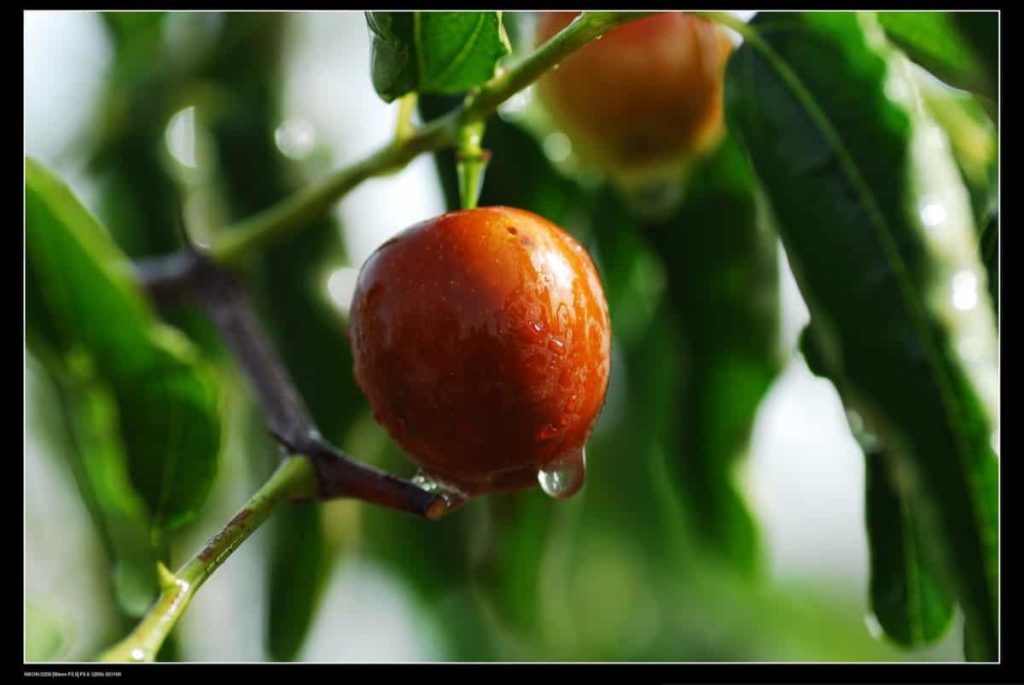
How do you care for Indian Jujube?
Jujubes are drought tolerant but need water to produce juicy fruits. You should let the soil dry a few inches before watering, and then water deeply. Fertilize and apply fresh fertilizer every spring. These perform best in warm, dry climates but can withstand winter ups and downs to -29 °C. Jujubes are not specific about the pH of the soil but need to be planted in full sunlight.
Conclusion
It is not so challenging to grow Jujube fruit. You have to follow some common steps to grow Jujube from seed. You should soak the seeds in water for 48 hours before planting and also have better germination. If you’re looking for a fruit tree that’s very tolerant and easy to grow or enjoys the heat, Jujube is the perfect tree for you. A wide range of Jujube varieties allows you to choose the best variety for your needs, from small trees to tall trees that produce fruits suitable for freshly picked food or once dried.
- Best Liquid Fertilizer for Flowering Plants
- How to Set Up an Efficient Watering System for Home Garden
- How to Mulch Tulip Bulbs: Expert Tips Best Tulip Blooms
- Common Problems with Potted Figs and How to Solve Them
- How to Prevent Flower Drops in Pomegranate Trees: Effective Tips
- How to Boost Ridge Gourd Flowering and Yield: A Beginner’s Guide
- Effective Pollination Techniques for Maximizing Gourds Yield
- Composting Techniques for Manure in Home Gardens
- A Step-by-Step Guide on Propagation Techniques for Jasmine Plants
- How Do I Make My Garden Less Cluttered: A Beginners Guide
- Growing Red Currants at Home for Beginners
- Gardening Techniques in Planting Vegetables
- Where to Place Indoor Plants in Your Home
- How to Grow Tomatoes Organically at Home: A Comprehensive Guide
- Organic Gardening on a Budget: Low-Cost Methods and Materials
- Gongura Seed Germination and Planting Methods
- Cabbage Seed Germination and Selection
- Broccoli Seed Germination and Selection
- Asparagus Seed Germination and Variety Selection
- Seasonal Flower Gardening: Best Practices for Spring, Summer, Fall, and Winter
- How to Grow Hibiscus from Flower
- Plantation Ideas for Home Decoration: A Beginners Guide
- Flower Garden Designs and Layouts for Beginners
- Planting and Spacing Techniques in Papaya: A Beginner’s Guide
- Growing Gold: Essential Techniques for Planting Pineapples
- How to Make Kalanchoe Plant Bushy: Home Remedies and Solutions
- 11 Reasons Why Your Gardenia is Not Blooming: Home Remedies and Solutions
- Eco Elegance: The Guide to Designing a Drought-Tolerant Landscape
- Gardening on a Slope: Strategies for Hillside Landscaping
- Nourish and Flourish: Top Organic Mulches for Thriving House Plants
- Everything You Want to Know about Indian Mogra Flower: Discover Uses and Growing
- Green Thumb Success: Expert Tips for Cultivating Greenhouse Pumpkins All Year Round
- Maximize Growth & Flavor: The Ultimate Guide to Companion Planting in Herb Gardens
- How to Control Rhododendron Problems Naturally: Home Remedies and Organic Ways to Fix Them
- Natural Magic: The Remarkable Benefits of Cinnamon for Plants
- Best Steps to Revive Dying Tulip with Natural and Organic Treatment